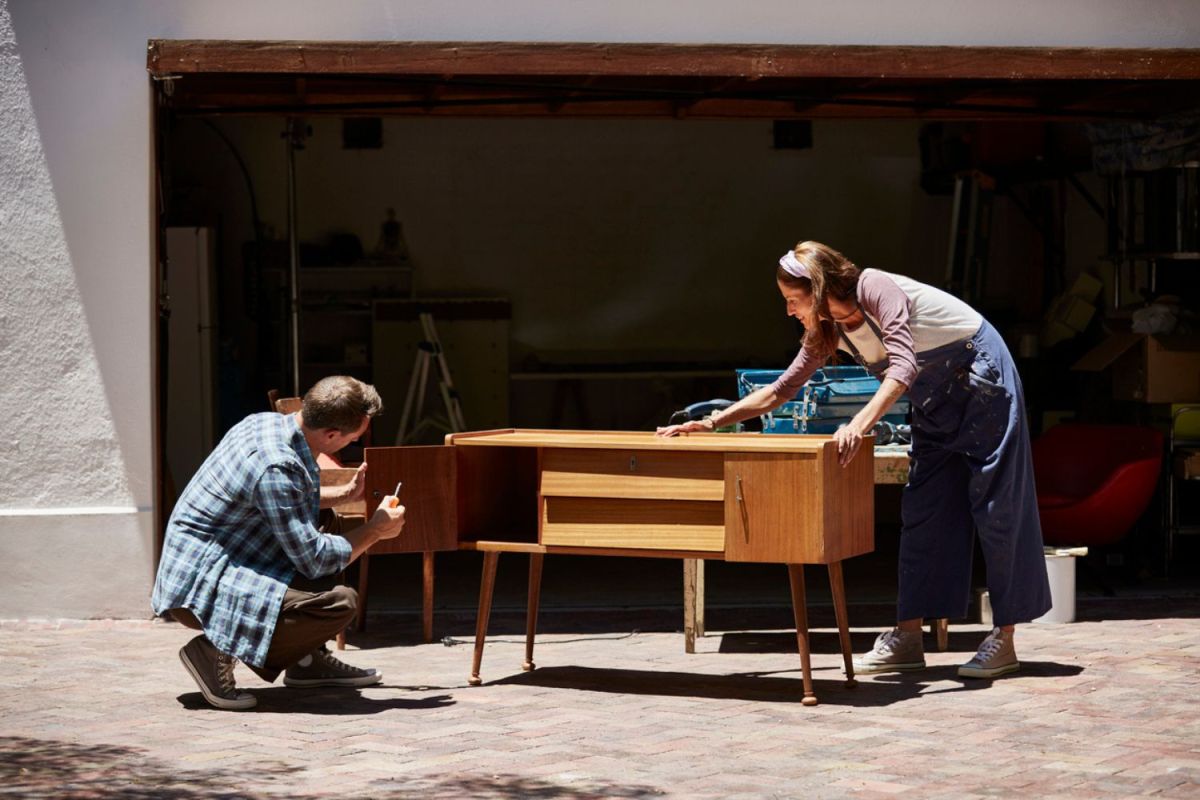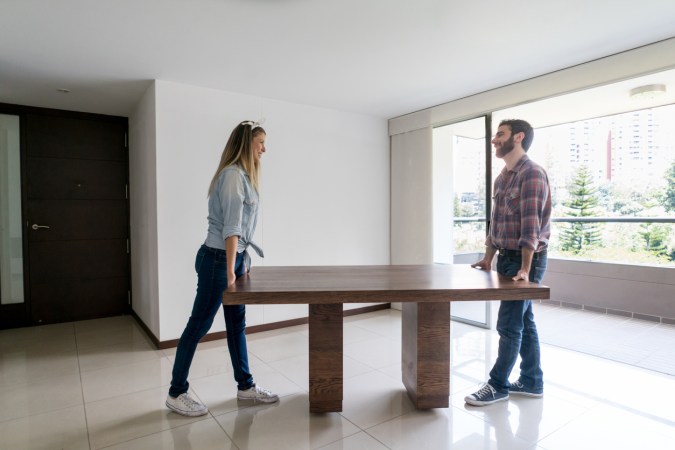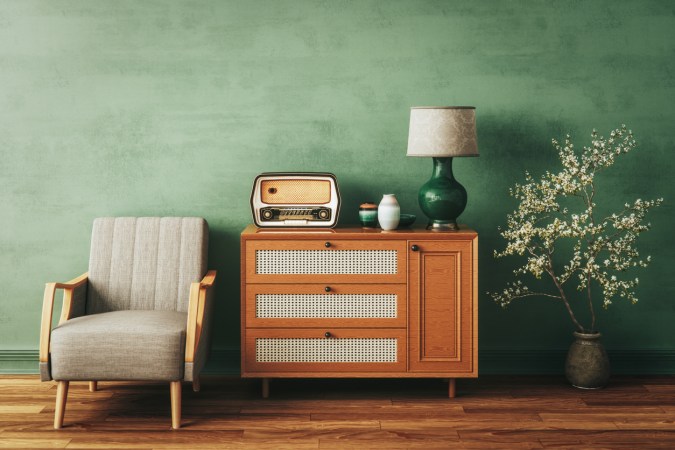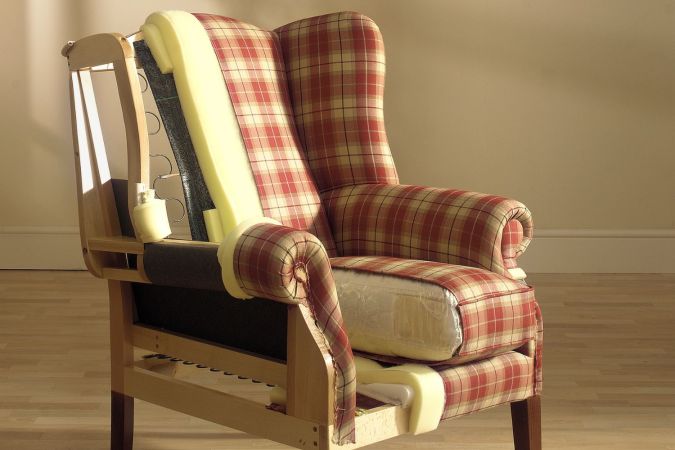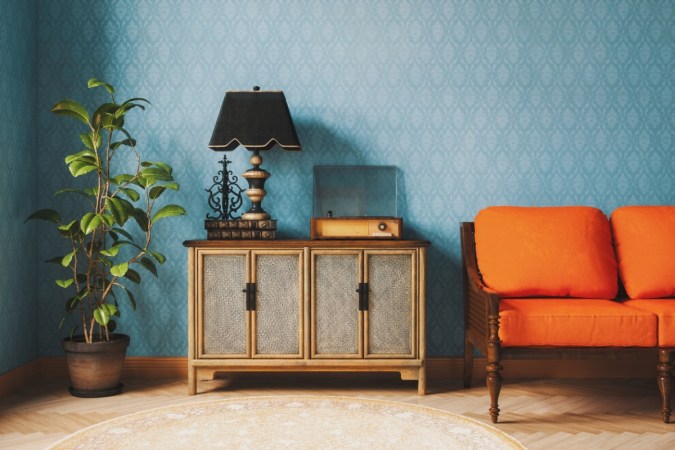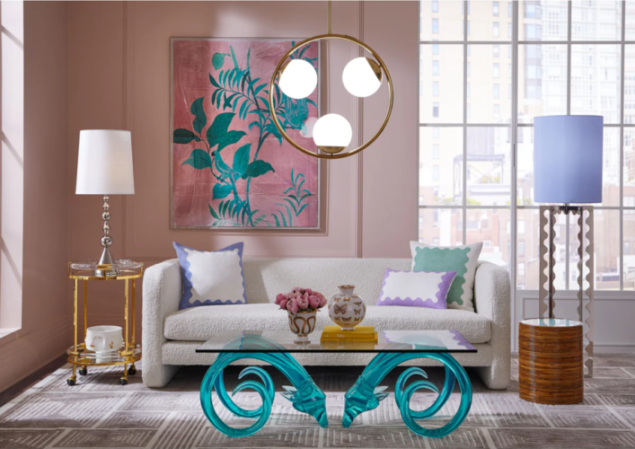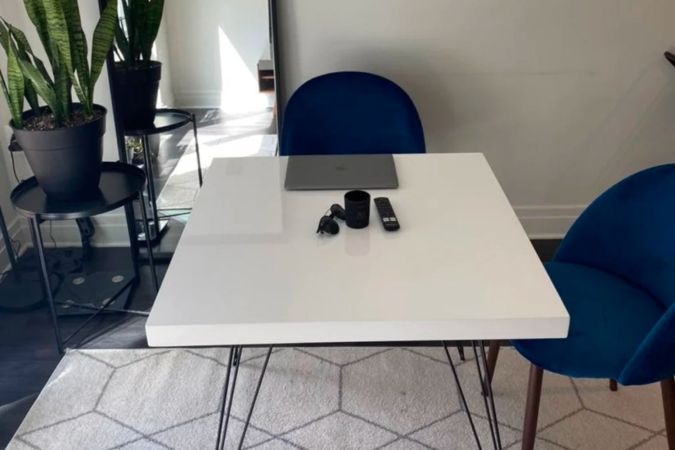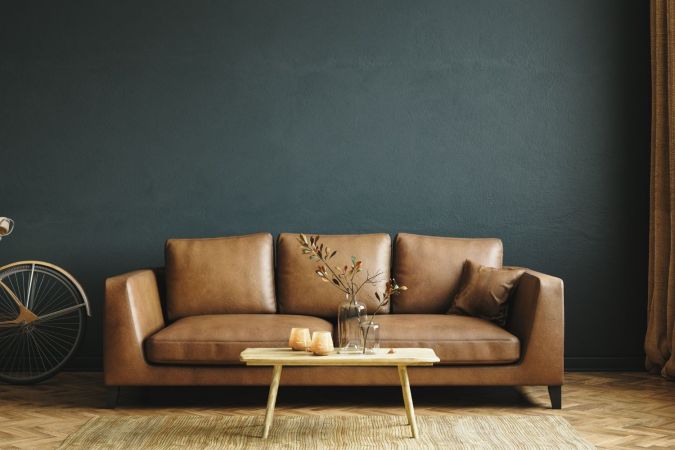We may earn revenue from the products available on this page and participate in affiliate programs. Learn More ›
Highlights
- The typical cost to refinish furniture ranges from $335 to $917 with a national average of $625.
- The exact cost to refinish furniture depends on the furniture type and material, the refinishing method used, and the cost of labor.
- Some common signs that a piece of furniture needs to be refinished include chipping or flaking, cloudy spots or water marks, a damaged or discolored finish, or a sticky surface. Another reason to refinish a piece of furniture is if it’s old and dated and needs to be refreshed.
- A handy DIYer with enough spare time may be able to refinish a simple furniture item, such as a table or chair, by themselves. However, for larger projects or antique pieces, it’s often best to hire a professional furniture refinisher.
Furniture flipping is probably just as popular—if not more—than house flipping. It’s also much easier and faster, which is why so many DIY enthusiasts love to update a worn but usable piece of furniture. The possibilities are almost endless when it comes to furniture refinishing. An antique china cabinet could benefit from a fresh coat of paint and having new glass installed, while a light-colored table could simply be painted a darker color to better suit a home’s interior.
On average, furniture refinishing cost averages $625 or between $335 and $917 for a professional to do the job, according to HomeAdvisor. This cost covers labor and materials for each necessary step in the refinishing process, from sanding to repainting. Major repairs will cost extra. A simple wooden chair refinishing won’t take as long as refinishing a king-size bed, which is why the type of furniture is one of the biggest factors that determine the cost of refinishing furniture. Additionally, antique furniture restoration can be a delicate process to preserve the integrity of the piece, which means a higher cost due to extra labor and materials. However, for many, the satisfaction of keeping a refreshed and updated piece of furniture outweighs the cost to refinish furniture.
“One of the most obvious benefits [of refinishing furniture] is the quality of older furniture vs. newer furniture,” explains Bill Schoenbauer, CEO and owner of Schoenbauer Furniture in Charlotte Hall, Maryland. “Modern furniture is often constructed of softer woods or MDF materials with wood veneer. Refinishing costs are generally less than replacement, but there can also be sentimental value as well. Both antique and modern furniture can be refinished if they are constructed of solid wood, or wood veneers.”
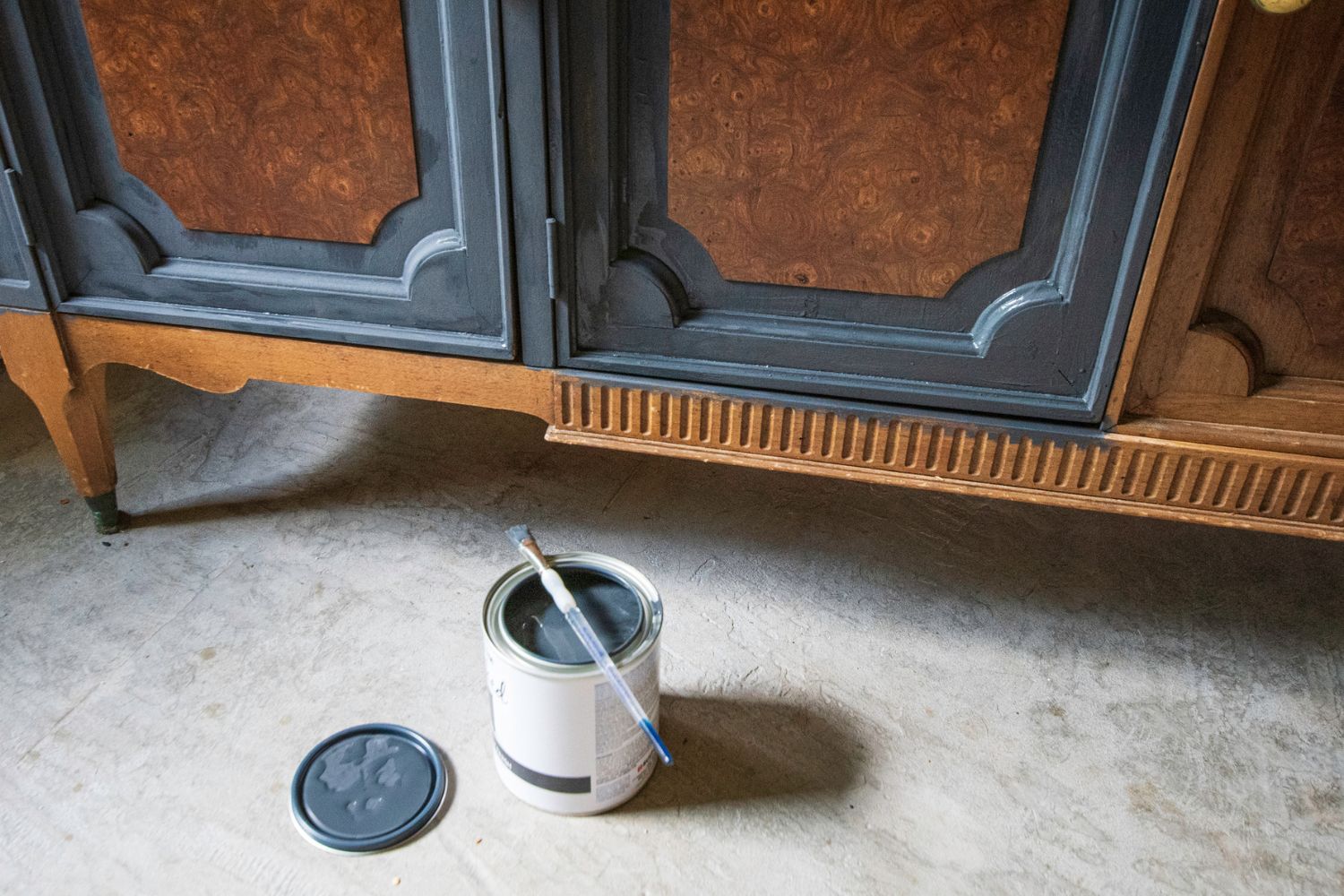
Factors in Calculating Furniture Refinishing Cost
Many people are curious about furniture refinishing costs since there are so many possible factors to consider, from type of furniture to labor. “The primary factors that affect the cost of refinishing are generally the size and style of a piece, the type of finish that is currently on the piece, and even the wood species,” explains Schoenbauer. “Some finishes are particularly difficult to remove compared to others and some wood species may require the extra step of grain-filling to provide a smooth, close-grained finish. If a piece needs structural repairs, that would increase the cost as well.”
Furniture Item
The type of furniture being refinished is important to consider since some pieces require much more intensive or skilled work than others. A professional working on a dining room chair with multiple slats will need extra time and materials to prepare and finish each slat on the back of the chair. On the other hand, a fiddleback chair will be easier to refinish since there’s only a single large slat in the back.
The same goes for table restoration, vintage furniture restoration, wood restoration, and more. The more complicated the design or the more materials and labor needed, the higher the cost. Customers can expect to pay about $100 to $700 per item on average for most furniture renovations. For example, a dining room chair can cost between $100 to $400 to refinish, while a dresser could cost $300 to $2,000 to refinish.
Furniture Material
In most cases, furniture refinishing refers to updating the appearance of furniture by sanding the surface and adding fresh stain or paint. But some folks are curious about the cost to reupholster a chair, which is quite different from the cost to refinish cabinets. On average, reupholstering a dining room chair can cost $50 to $250, and refinishing a wooden dining chair may cost $100 to $400.
Kitchen cabinet refinishing is one of the more expensive furniture refinishing costs at $1,800 to $4,100. Removing the cabinet doors, uninstalling hardware, sanding, repainting, and reinstalling the cabinets doors and hardware is a labor-intensive job. It can take a DIYer several days to complete this job, while a professional can usually handle it in about 14 hours. In all cases, the refinishing cost will vary due to the different materials required, whether the project is a leather chair, a wooden table, or laminate cabinets.
| Type of Furniture Material | Average Cost (Materials and Labor) |
| Glass | $200 to $2,000 per panel |
| Leather | $30 to $750 per hide |
| Metal | $7 to $32 per linear foot |
| Wicker | $4 to $20 per inch |
| Wood | $100 to $3,800 per item |
Refinishing Method
Not all refinishing methods are the same—even for wood refinishing. This is why a professional’s help can be crucial so the article of furniture, whether it’s a dresser or table, is refinished in a way that will look great and last a long time.
Stripping a metal or wooden piece of furniture is one way to prepare it for the new paint or stain, but it’s also a harsh method that can damage older furniture. Furniture stripping usually costs $100 to $500.
Sanding furniture surfaces before applying fresh paint or stain is crucial to ensure a clean, strong bond and typically costs $300 to $800. This is sometimes combined with refacing the furniture (applying the stain or paint), such as for a kitchen cabinet or dresser. And it’s almost always part of the process when refinishing a wood table.
Sealing is often done alongside staining since they’re both helpful for protecting wooden furniture against moisture. Staining costs about $150 to $500 per item, while sealing costs $80 to $300 per item.
Reupholstering is a much more labor-intensive project, which is why the cost averages $370 to $1,110. A simple barstool with a vinyl-padded cushion is much cheaper to refinish than a full microsuede couch—and requires far less material too. The cost to reupholster a couch can be as high as $4,000.
Labor
A professional’s hourly rate to refinish furniture averages $40 to $100 and makes up about 50 to 85 percent of the total cost. So if the average furniture refinishing cost is $625, then at least $310 or more of that price is just for labor. Yet the cost comes with expertise and patience that typically ensures the job will be done on time and with high-quality workmanship. These rates can vary due to geographic location and current demand for furniture renovation.
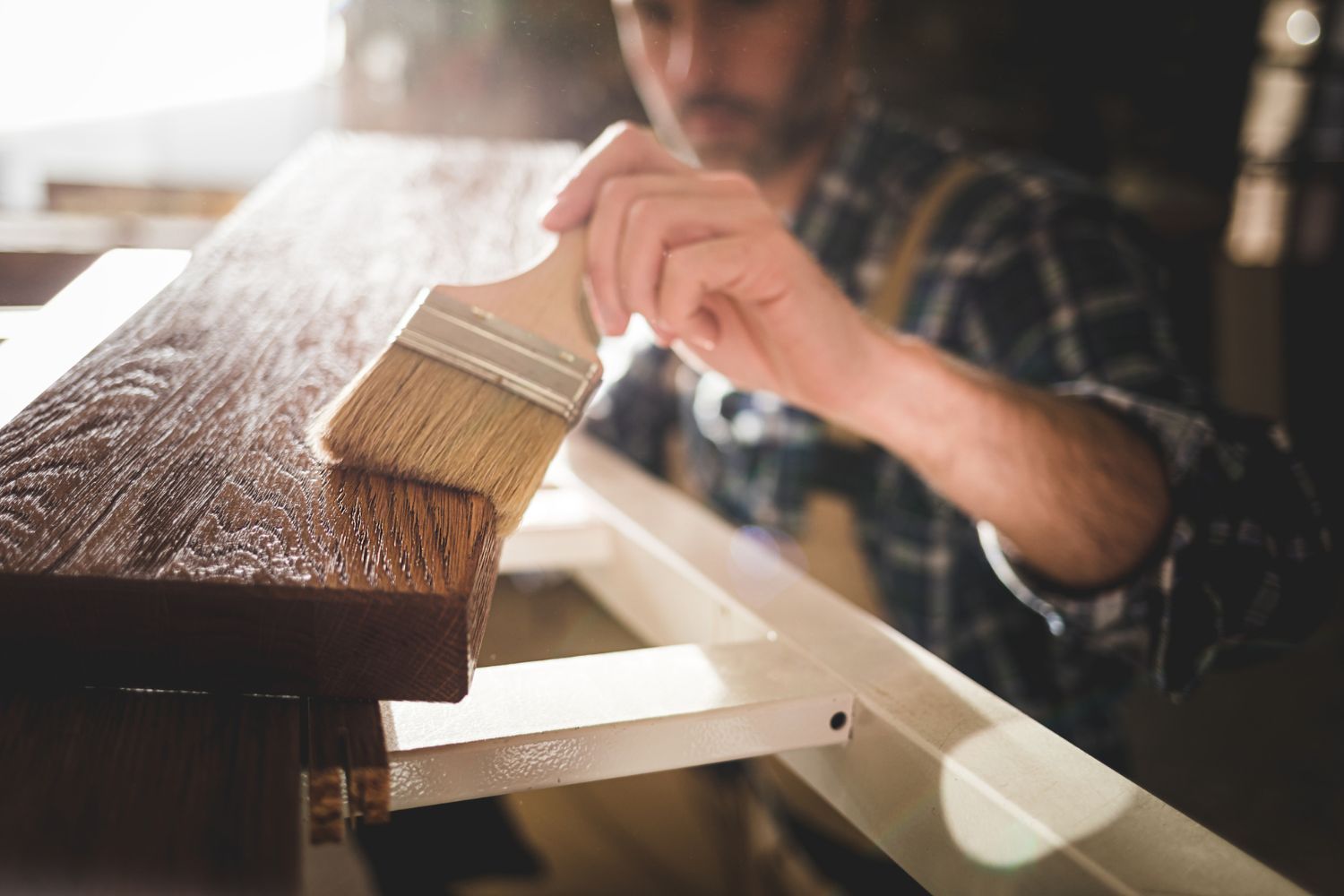
Additional Costs and Considerations
There are often factors beyond simple refinishing needs that one may need to consider. For instance, the item might have significant damage that needs to be repaired first, or it may need quite a bit of cleaning before it can be refinished. In terms of the most expensive consideration for customers, whether or not the piece is an antique will be another possible factor to consider for the cost to refinish furniture.
Furniture Repair
Pieces of furniture that are broken or have missing parts can be among the most expensive in terms of repairs. Getting a new piece of wood or metal to match the original takes time and effort—passed along as extra cost to a customer. Damage that’s more minor, such as cracked or peeling paint or veneer, would only need to be sanded or stripped away.
The cost to repair rips or holes in fabric can vary significantly depending on whether the item only needs a patch or requires a full reupholstering. Most wood furniture repairs cost about $110 to $260, though seriously damaged items may cost up to $500 to repair.
Furniture Cleaning
Furniture that’s covered in dust, dirt, mud, grease, wax, odors, bodily fluids, stains, or pet fur or has an unpleasant odor may require some cleaning before it can be refinished. Usually furniture cleaning refers to the process of cleaning an upholstered piece, and the cost averages $105 to $215 per item. However, even wooden or metal items can benefit from cleaning sometimes. For example, some types of furniture, such as a wicker chair, do better with some light washing before refinishing since the woven materials easily trap dust and dirt.
Antique Furniture Refinishing
An antique piece of furniture can be restored to its original beauty with skilled care and attention since renewing old wood furniture is a delicate task that can take years to get the hang of. It’s easy to ruin vintage furniture during the refinishing process, which is why so many people choose to work with a professional.
Some pieces need only some sanding and painting, while others require some repair work first. If an antique piece of furniture has lots of curves and complex designs, the cost to refinish it will increase. The condition of the piece will influence the final price, but customers often spend between $1,000 and $5,000 to refinish antique furniture.
Furniture Refinishing Cost by Type of Furniture
The size, condition, and complexity of the type of furniture all affect the cost to refinish it. That’s why there are such variations in how much someone can spend to refinish different pieces of furniture. Sometimes having multiple pieces refinished at the same time can lower the price per piece. Though restoring old furniture costs about $625 on average, some people spend much more or less.
| Type of Furniture | Average Cost (Materials and Labor) |
| Barstool | $100 to $250 |
| Bed | $350 to $2,000 |
| China cabinet or armoire | $500 to $3,500 |
| Coffee table | $150 to $800 |
| Dining chair | $100 to $400 |
| Dining set | $1,000 to $3,000 |
| Dresser | $300 to $2,000 |
| Kitchen cabinets | $1,800 to $4,100 |
| Pool table | $300 to $600 |
| Rocking chair | $200 to $500 |
| Table | $150 to $600 |
Barstool
Refinishing a barstool can be one of the easiest jobs, and that’s reflected in the lower price point of $100 to $250 per stool. This cost typically covers the most basic of barstools, so complex or upholstered barstools may cost more to refinish.
Bed
An antique bed with four decorative posts and a headboard is going to cost the most to restore—possibly 20 to 50 percent more than a regular bed that costs about $350 to $2,000. Beds with a headboard or lots of slats or curved edges will have a higher average cost to refinish than those with a more modern, simple design.
China Cabinet or Armoire
Surprisingly, refinishing a china cabinet or armoire comes in at one of the highest price points: $500 to $3,500 each. They’re a bit more complex than one might think, and they’re often antique, which makes refinishing a more delicate process.
Coffee Table
Many people thrift coffee tables that need to be refinished to suit their home’s aesthetics. Depending on a coffee table’s design and condition, it can cost $150 to $800 to refinish.
Dining Chair
Some dining chairs have simple designs, while others have multiple materials and complex designs. The design will influence the cost to refinish a dining chair, which ranges from $100 to $400.
Dining Set
It can be advantageous for someone to ask about volume pricing if they have a full dining set that needs refinishing. A professional can work efficiently on the same types of furniture without having to switch between materials or tools frequently. To refinish a full dining set, customers spend an average of $1,000 to $3,000.
Dresser
It’s safe to say that dressers are another commonly thrifted or upcycled item. Many people love to refinish small dressers themselves, but the cost to pay a pro averages $300 to $2,000 for large or antique pieces.
Kitchen Cabinets
Refinishing kitchen cabinets can be a large share of a kitchen remodel cost. This project can cost anywhere from $1,800 to $4,100 on average. It’s best to speak with a professional to find out if refinishing, refacing, or replacing the cabinets is the right choice, as it will depend on their current condition and the customer’s design preference.
Pool Table
A well-maintained pool table is essential for fair and easy play of this time-honored game. Sometimes it’s necessary to have the wood resealed and the felt replaced. This process typically costs $300 to $600 and is definitely a job for a pro who has the specialized tools required.
Rocking Chair
Since rocking chairs can be wooden, wickered, or upholstered, there are some variations in the cost to refinish them. On average, customers spend about $200 to $500 since there is more surface area to sand and repaint on a wooden rocking chair. Reupholstering a rocking chair could cost more.
Table
If a table needs to be refinished, customers can expect to pay $150 to $600. The size is usually the biggest factor for price, although an antique table will typically always cost more to refinish.
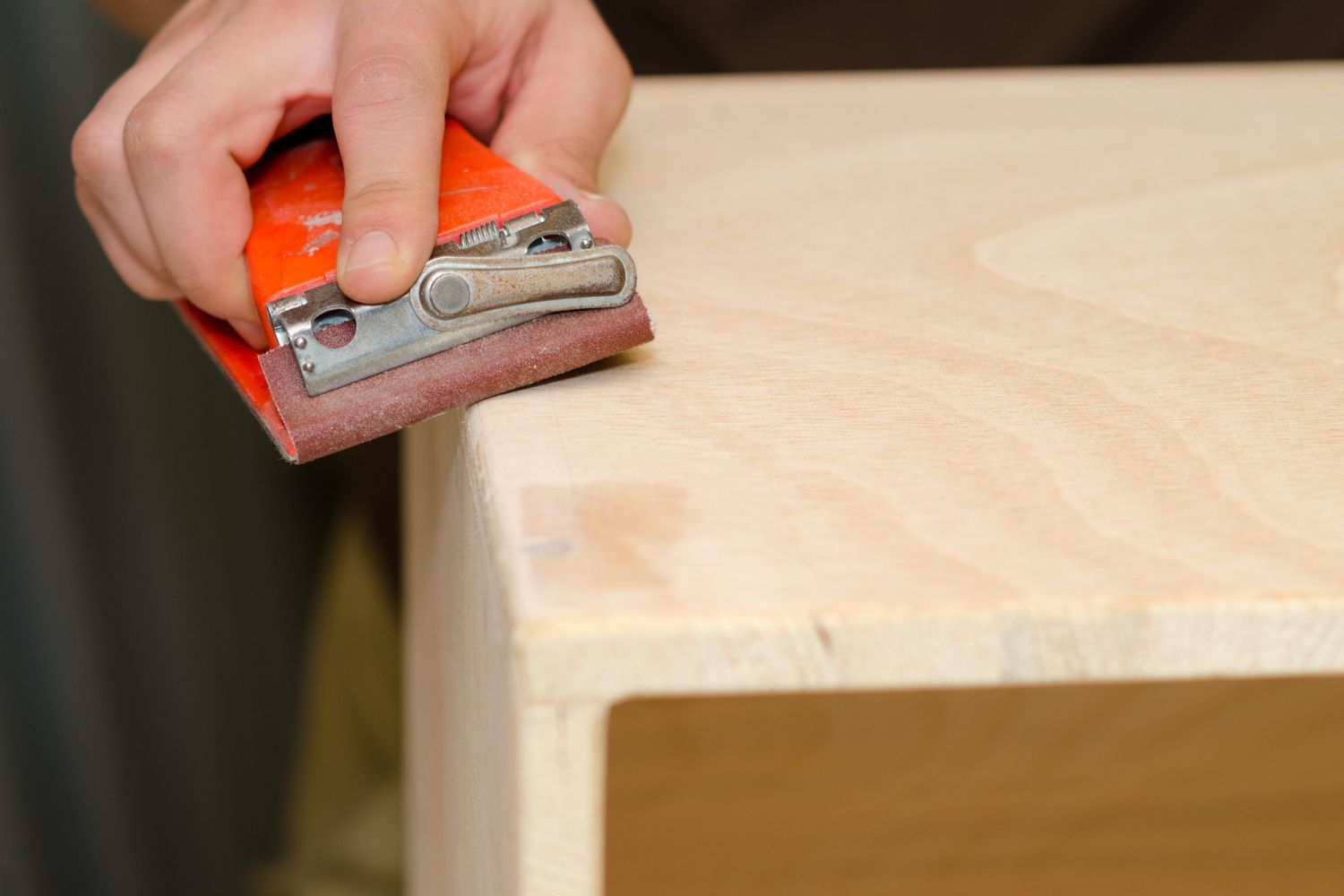
Do I need furniture refinishing?
Some people may wonder if a piece of furniture actually needs to be refinished or replaced. In many cases, what appears to be a damaged item just needs some careful attention by a skilled professional. A fully restored piece of furniture may come at a lower price than full replacement. Most importantly, when a particular item has sentimental value, the owner will appreciate having it refinished and beautified again. According to Schoenbauer, “Some of the most common signs could be worn or cracked finishes [and] blushing [or] haziness in the finish, which can be a sign that the finish is sensitive to moisture exposure.”
Aging Furniture
Knowing the age of the furnishing is crucial to refinishing it properly. Using chemicals to strip old paint and varnish from a chair can work on some woods, but anything older than about 1850 needs special attention and a gentler touch to prevent the value from significantly dropping. Dents and scratches and other signs-of-aging damage are good reasons to speak with an experienced refinisher who can make recommendations for safely restoring the antique wood.
Chipping and Flaking
One of the most obvious signs that a piece of furniture needs some refinishing is when the surface is chipping or flaking. This is usually caused by old, weathered, or poorly applied varnish, paint, or stain. UV rays can do a number on wood and wicker items, so they often need more frequent refinishing than other household furnishings. The existing layers of paint or lacquer will need to be sanded down before the new coat can be applied.
Sticky Surface
Wood furniture shouldn’t be sticky or tacky to the touch after it’s been cleaned. If it is, then it’s time to look into refinishing it. A sticky surface means the wood has been compromised and is filled with bacteria, dirt, oils, or other substances. Sanding down a few layers before applying new stain or varnish will resolve this problem.
Cloudy Spots or Water Marks
Any discoloration that can be wiped away with a damp cloth is nothing to worry about. However, if a cloudy spot or water mark remains after gentle cleaning, then the surface has been compromised and needs attention. Cloudy spots or marks from water that have seeped into the wood and sit below the surface will require quite a bit of sanding to remove the imperfections.
Damaged or Discolored Finish
Significant discoloration that isn’t just a water mark is another sign that the item needs to be refinished. This discoloration happens when moisture builds on certain parts of the surface and the lacquer or shellac isn’t strong enough to resist it. The surface will continue to deteriorate until it’s repaired.
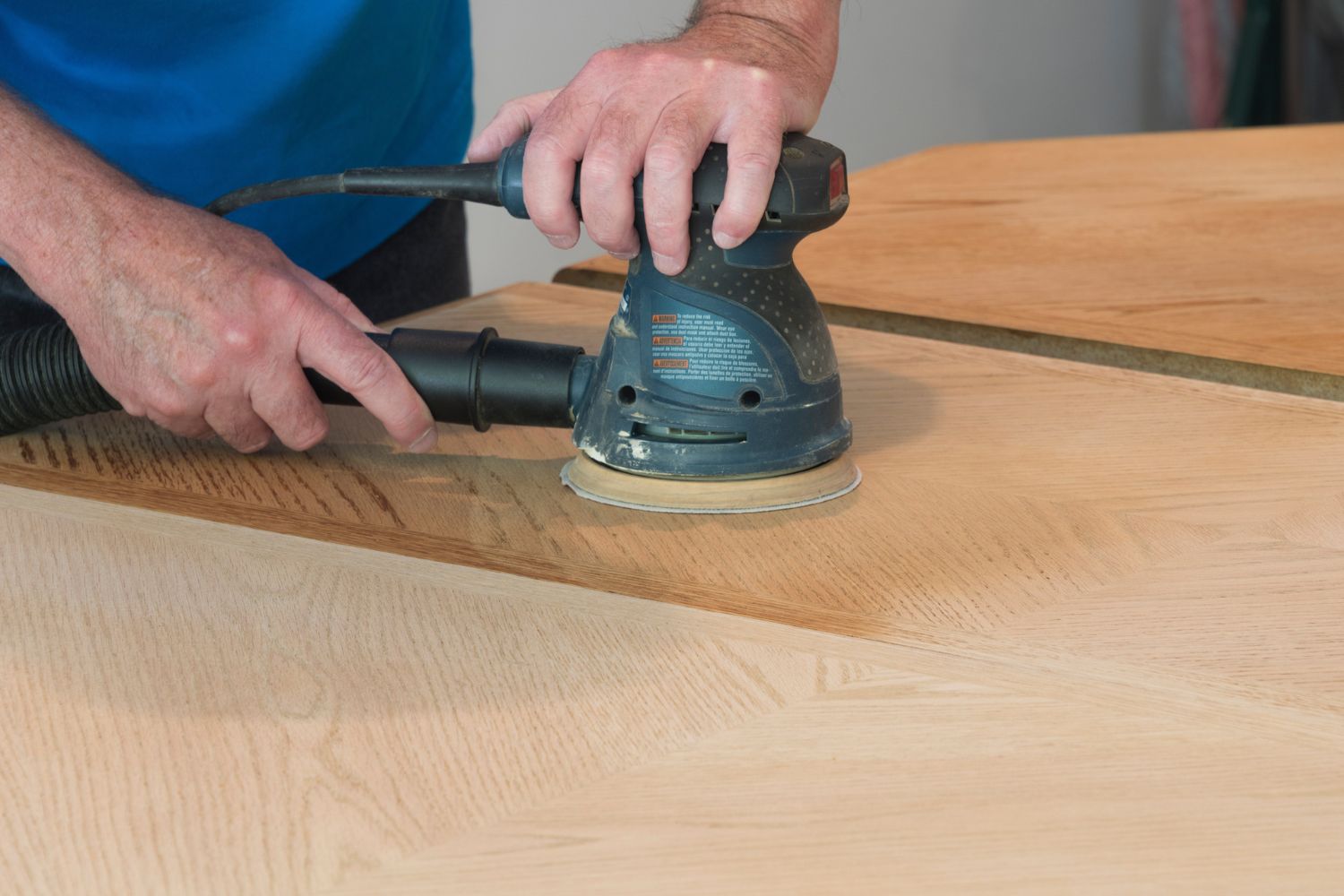
Furniture Refinishing: DIY vs. Hiring a Professional
Furniture restoration takes time and patience—and more materials and tools than might be expected. Many people want to have the time to do their own furniture refinishing, but the demands of life often prevent them from committing the time. That’s why it’s helpful to hire a skilled professional who knows how to refinish a piece of furniture correctly and in a timely manner.
DIY enthusiasts who have lots of tools at their disposal may feel confident about tackling a simple chair or coffee table. They’ll need to use the best sander for furniture refinishing, avoid damaging the piece while sanding, and apply the proper type of stain or paint. It’s common for most restoration projects to take much longer than expected—and to come with unexpected problems to solve.
Sometimes the time and headache isn’t worth it, though, so calling in a professional can be a huge benefit. These skilled craftspeople have specialized furniture refinishing tools to make fast, sure work of difficult tasks. They’re also familiar with what kinds of materials are best for certain types of wood or metal.
In the case of an upholstered piece of furniture, a professional upholsterer can alleviate common concerns for those who aren’t familiar with proper techniques and don’t have the right equipment to do the job themselves. Getting a piece of leather or fabric to sit smoothly while attaching it to the chair or couch is no small feat unless the right tools and know-how are available.
This is even more true and important for refinishing antique pieces of furniture. It’s easy to damage a piece of furniture while trying to restore it, but expert antique restorers are adept at knowing the right tools and materials to use. Not to mention they have the patience necessary to avoid rushing the job and causing damage. All in all, hiring a professional refinisher or craftsperson is beneficial in the long run.
“Warped or rotted wood is not always salvageable, but it is rare that we come across a piece that is beyond repair,” remarks Schoenbauer. “It’s typically possible for portions of a piece to be completely replaced or refabricated and once it is finished, you would never know that it’s not part of the original piece. Many of our customers are completely surprised by the transformation of their furniture which was seemingly destroyed by fire, water damage, or years of neglect.”
How to Save Money on Furniture Refinishing Cost
Small refinishing projects don’t always come with a high price tag, but when someone has multiple pieces of furniture or antique pieces to update, they may want a few ideas to keep the price tag low.
- Shop for discounted paint and stain. Nearly every hardware store has a section of deeply discounted products, and even the best paint for furniture can often be found there.
- DIY part of the job. If the thought of stripping or sanding some intricate woodwork is too much, a customer can opt to have a professional do all the prep work to get a piece of furniture ready for fresh paint. Then the customer can take care of painting the furniture on their own to save on labor costs.
- Remove hardware first. Customers can help speed up the job (and reduce labor fees) by removing any hardware from dressers, cabinets, or tables before having the pro take over the refinishing job.
- Combine projects. Many companies and professionals offer volume discounts to work on several projects at once. This helps them be efficient and plan for materials more easily, which can save on total costs.
- Keep wood furniture in good condition. Wood products can last a long time when well maintained, prolonging the refinishing investment. Using the best furniture polish can keep a restored chair or table looking its best for years to come.
Questions to Ask About Furniture Refinishing
When hiring a skilled refinisher to update some damaged or aging furniture, customers will want to be prepared with several questions to ensure a smooth transaction and avoid miscommunication.
- How long have you been in business?
- Do you have references I can speak with?
- Have you worked with this type of material or wood before?
- What are the most common problems you look for when refinishing furniture?
- What if you don’t have the exact kind of wood or fabric to match my existing furniture?
- What methods do you recommend to restore my piece of furniture?
- Have you worked with antique furniture? If so, do you have examples of work I can review?
- What kind of protective measures do you take to ensure the furniture is not damaged during the refinishing process?
- What would it cost for you to only strip or sand down the surfaces completely if I wanted to paint them myself?
- How long will it take to refinish this item?
- How much will it cost to refinish?
- Do you offer any warranties or guarantees?
- What kind of maintenance or care do you recommend?
FAQs
There are lots of terms used to describe various processes of updating old furniture, and it can be confusing. To help customers feel confident about what solutions they’re looking for, the answers to these common questions can help during the decision-making process.
Q. What is the difference between furniture refinishing and refurbishing?
Refinishing is a more robust process that strips or sands down the worn-out surface to make way for a new coat of paint or stain. This is the most common method used when an item is especially aged. That’s why furniture refinishing costs are typically higher than refurbishing costs.
Refurbishing is a gentler process that focuses more on cleaning the item and doing some light touch-up work. A little sanding or painting may be all that’s needed for furnishings that are in generally good condition.
Q. Is it better to sand or strip furniture?
It depends on how old the item is. Vintage furniture should not be stripped because the chemicals are too harsh on the wood and can damage its integrity and value. However, a newer piece of furniture can usually handle a chemical stripping process; it’s typically faster than sanding down the furniture, which is part of the appeal. Safety precautions always need to be taken when working with chemicals.
Q. Do I need to remove all stains before restaining furniture?
It’s usually best to remove stains if changing from a darker to lighter color. If updating to a darker color, it’s possible to simply cover up the stain with darker paint or stain. However, there is an argument to be made that any surface imperfections will cause poor adhesion between the new paint and the surface. This can speed up a future chipping or peeling problem, which means it’s usually best to simply repair the stained area first.
Sources: HomeAdvisor, Fixr, Woodcraft
